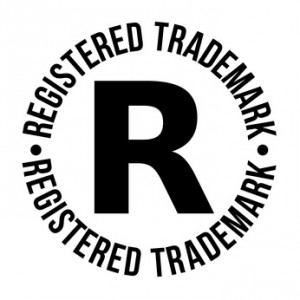How To Protect Your Intellectual Property In Laos
Enacted on 20 December 2011, the Law on Intellectual Property No. 01/NA (the “Law”) is the principle legislation governing intellectual property (“IP”) protection in Lao PDR. The Law defers ultimate authority at the top of the hierarchy of IP regulations to international conventions and agreements to which Lao PDR is a party. As such, where inconsistencies exist between the Law and international conventions and agreements, the provisions of the international convention or agreement shall prevail.
The Law is drafted to conform with and implement the current international IP protection frameworks including the Berne Convention for the Protection of Literary and Artistic Works (link), and the Paris Convention for the Protection of Industrial Property (link).
Why you should protect your IP in Lao PDR
As Lao PDR’s economy grows and more companies begin conducting commercial activities here it will become increasingly important for businesses to protect and maintain their competitiveness in the market. A company’s failure to effectively protect its IP or to restrict infringement of its IP can lead to the loss of market share, revenue, reputation, opportunity and competitive advantage.
IP protection is essential for a company or individual to maintain effective control over the way their invention, innovation, product or work is accessed, used and exploited in the marketplace and how they benefit from it.
Though there are many different IP protection mechanisms, the primary vehicles of IP protection in Lao PDR are trademarks, patents, copyright, and industrial designs.
Trademarks
Lao PDR is a member of the Madrid System (link) of trademark registration that offers protection in up to 115 member countries worldwide. Trademarks registered in other Madrid System countries may be granted reciprocal registration and a trademark certificate acknowledging protection over the relevant mark in Lao PDR.
To obtain IP protection for a trademark in Lao PDR a trademark certificate must be issued in respect of the mark. A trademark may be any sign, or combination of signs, capable of distinguishing the goods or services of one entity or product from those of other entities or products. Such signs may include words and personal names, letters, numerals, figurative elements and combinations of colours and signs.  Eligible signs must be visually perceptible and not identical to a previously registered mark, well-known mark, or geographical indication for the same or similar goods or services where the later mark would tend to cause confusion as to the source of the goods or services or create a false impression that they are connected or associated with another party.
Eligible signs must be visually perceptible and not identical to a previously registered mark, well-known mark, or geographical indication for the same or similar goods or services where the later mark would tend to cause confusion as to the source of the goods or services or create a false impression that they are connected or associated with another party.
As such, registration of a trademark offers the right to protect such mark from unauthorised use by a third party in Lao PDR that would infringe on it in such a way as described above.
Determining whether a mark is considered ‘well-known’ for the purposes of determining eligibility of a similar mark is a process subject to the Law and includes how recognizable it is within a relevant industry in Lao PDR, the volume and period of use of the mark, and any goodwill associated with the use of the mark, amongst other factors.
Applications for trademark registration are conducted through the Ministry of Science and Technology and may be made to apply to one or more classes of goods or services as described in the Nice Agreement for Classification of Goods and Services (link) (although Lao PDR is not a signatory to the Nice Agreement trademark registration in Lao PDR uses the same classes of goods and services as set out therein).
Trade names are protected under the law without the obligation of registration, regardless of whether or not it forms part of a trademark.
Patents
A patent is a bundle of IP protection rights held by an inventor or their assignees with respect to an invention in which information concerning the invention is protected from being exploited by third parties.
Under the Law a patent “means the official certificate issued by the state organisation to protect inventions.” An application to obtain a patent with respect to an invention in Lao PDR must demonstrate that the respective invention satisfies the following requirements:
- The invention must be new –e. the invention has not existed, not been disclosed to the public by publication or use or in any other means in the Lao PDR or any other place prior to the date on which the respective application for registration is made;
- The invention involves an inventive step. The invention must not be obvious to a person having ordinary knowledge in the field or industry in which the invention seeks to be used or applied; and,
- The invention is industrially applicable. The invention must be able to be “applied usefully in industry, handicraft agriculture, fishery, services, etc”.
Petty patent protection may be offered to innovations which do not reach the threshold required for patent protection. Petty patent protection may be applied for for a utility innovation which meets the following requirements:
- It is new in the sense that it has not previously been know or used within one year prior to the date of application within Lao PDR;
- It involves a new technical improvement that involves an inventive step which may be a lesser step than that required for a patent; and,
- It is industrially applicable, meaning that it can be “applied usefully in industry, handicraft, agriculture, fishery, services, etc”.
Certain inventions may be ineligible for patent or petty patent protection for the following reasons:
- They are discoveries of existing things including living organisms or parts of living organisms that exist in nature; and
- They are scientific theories or principles, mathematical algorithms, or sets of rules for doing business or playing games, noting that such things may form part of eligible inventions.
Likewise, diagnostic, therapeutic and surgical methods of treatment of humans and animals, and essentially biological processes for the production of plants or animals are also ineligible for patent protection. Noting, again, that such elements may constitute part of an eligible invention.
The Law also retains special discretion to refuse registration of a patent with respect to an invention where it is considered necessary to prevent its commercial exploitation to protect the culture and traditions of Lao PDR or where it is necessary for the protection of essential security interests of Lao PDR.
Noting the above, the registration process for patents and petty patents in Lao PDR will grant priority, in the case of disputed applications, to whoever files the application first.
While the granting of a patent or petty patent may take years from the date of filing the application, patents offer protection for twenty years from the date of filing and petty patents for 10 years.
Copyright
Copyright refers to the rights protecting works of authorship in art and literature, including scientific works and computer programs, in accordance with the Law. Copyright protection arises in artistic or literary works immediately upon the creation of such works and exists regardless of registration of such protection. Copyright owners may apply to the Department of Intellectual Property to have their copyright recorded to simplify the settlement of any disputes that may arise with regards to the protected works.
 Copyright is the IP regime for the protection of artistic works such as drawings, paintings, sculptures, photographs, illustrations, musical works and compositions, and works of literature such as books, brochures, speeches, plays, and academic works.
Copyright is the IP regime for the protection of artistic works such as drawings, paintings, sculptures, photographs, illustrations, musical works and compositions, and works of literature such as books, brochures, speeches, plays, and academic works.
The owner of copyright in a work will be the author, or authors, except in particular cases in which the rights have been assigned or transferred or in some cases of work commissioned by a third party which provides compensation to the author/s for the copyright to the respective work or works.
The Law provides a list of exclusive economic and moral rights of copyright owners with respect to the work that applies equally to foreign and Lao authors in Lao PDR. Such exclusive rights include the rights to disclosure and publication of the work, to object to misattribution of authorship, to compile a collection of copyright works, to reproduce or translate the work, and to gain economic benefits from the sale, broadcast, performance, communication, etc. of the work.
Industrial Designs
IP protection of a product’s industrial design protects the “new and ornamental… form or shape of the product.”
The Law sets out requirements to obtain an industrial design certificate in order to protect IP in an industrial design as ‘new and ornamental.’
An industrial design shall be deemed ‘new’ for the purpose of the Law if it has not been disclosed to the public by publication, display or use, in Lao PDR or anywhere else, prior to the date of filing of the application for registration. An industrial design will be considered ‘ornamental’ for the purpose of the Law if it gives a special appearance to the object to which the design is applied or in which it is embodied and such appearance is not functional or dictated by technical features of the object.
Designs ineligible for industrial design registration are those in which the appearance of the design is dictated by technical features of the object to which the design is applied or in which it is embodies, and designs that are considered contrary to social order and the fine traditions of the nation by the relevant authorities.
Enforcement
Under the Law, violations of IP rights may be subject to civil enforcement proceedings, administrative enforcement and customs border measures including seizures of infringing property at point of importation into Lao PDR.
Civil enforcement proceedings may be brought by any interested party through a claim in the Peoples’ Court of Lao PDR. Such actions may also be initiated by federations and associations representing interested parties and by collective management organisations.
Remedies available from civil enforcement proceedings include orders of seizure of goods or suspension of import of goods, damages and expenses, and orders that the infringing goods be destroyed. Provisional measures may also be taken by the Courts in order to prevent an infringement of IP from occurring, to prevent infringing goods from entering the market, and to preserve evidence in regard to alleged infringements.
Under the Law, the Lao PDR Customs Department can provide for the suspension of goods that infringe a trademark, copyright or other IP rights from customs upon entry into Lao PDR. Such enforcement requires a complaint to be filed with the Department of Intellectual Property or the Customs Department, as relevant, informing such of the infringing goods.
Applying for IP Protection in Laos
IP protection can be applied for by all Lao citizens and companies and all citizens of nations that are members of international IP treaties or conventions to which Lao PDR is also a member. Individuals or entities that do not fall into these categories will be required to have a representative that does in order to apply for IP protection in Lao PDR.
IP protection applications may be filed in either English or Lao, though Lao language translations of submissions made in English must be provided to the relevant authorities within 90 days of the initial submission.
 This article has been provided by Arion Legal. Operating in Lao PDR since 2008, Arion Legal’s experienced team of lawyers provides focused, results orientated and cost effective legal and tax services to foreign and Lao investors.
This article has been provided by Arion Legal. Operating in Lao PDR since 2008, Arion Legal’s experienced team of lawyers provides focused, results orientated and cost effective legal and tax services to foreign and Lao investors.



